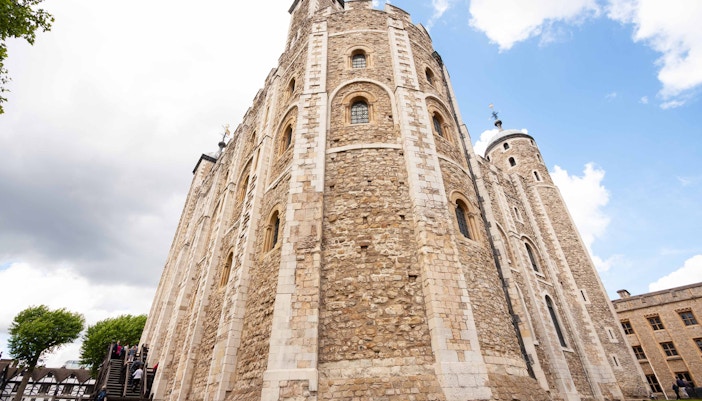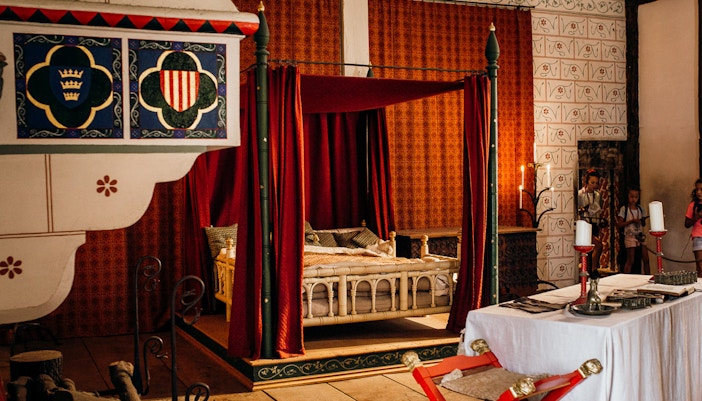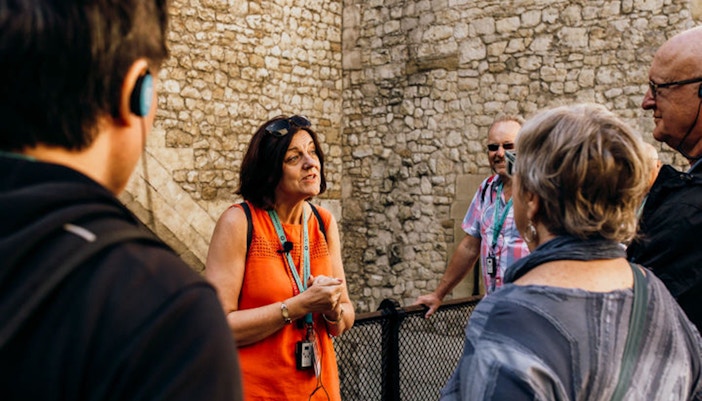- Tower of London
- Timings: 9am - 5:30pm (On some Sundays and Mondays, it opens at 10am)
- Last admission: 3:30pm
- Closed on: Dec 24 to 26 and Jan 1
Get ready for a trip back in time at the Tower of London! This historic fortress, founded by William the Conqueror in 1066, has seen it all—from being a royal palace to a prison. Wander through the majestic grounds, appreciate the beauty of the Cr...
Also Known As
Tower of London
Founded On
1097
Founded By
William the Conqueror

ADDRESS
London EC3N 4AB, UK
RECOMMENDED DURATION
3 hours
Timings
09:00–17:30
VISITORS PER YEAR
2000000
TICKETS
From $48.86
EXPECTED WAIT TIME - STANDARD
1-2 hours (Peak), 0-30 mins (Off Peak)
EXPECTED WAIT TIME - SKIP THE LINE
30-60 mins (Peak), 0-30 mins (Off Peak)
UNESCO YEAR
1988
The Tower of London has served as a royal menagerie, housing exotic animals like lions, elephants, and polar bears.
The crown jewels held at the Tower of London are so valuable that they cannot be insured, making them truly priceless.
The White Tower, the central building of the Tower of London, has walls that are up to 15 feet thick and were built using over 70,000 tons of limestone.
Tower of London Tickets with Access to the Crown Jewels
Combo: Tower of London + Tower Bridge Tickets
Combo (Save 5%): Tower of London + London Eye Tickets
Combo (Save 13%): London Eye + Thames River Cruise + Tower of London Tickets
Get ready to step into centuries of jaw-dropping moments, from royal jewels to spine-chilling mysteries and history.





The Tower of London is a masterpiece of medieval architecture, blending elements of Norman and Gothic styles. The White Tower, the original core of the complex, is a prime example of Norman architecture, with its imposing square shape, thick walls, and rounded arches.
As the Tower evolved, so did its architectural style. The addition of the inner and outer wards, with their Gothic features such as pointed arches and ribbed vaults, introduced a new level of sophistication and elegance. The Chapel of St. John the Evangelist, located within the White Tower, is a Norman building, while the chapel of St. Peter ad Vincula, in the inner ward, showcases a blend of Norman and Gothic styles.
The Tower's fortifications, including its imposing walls, constructed from Kentish ragstone and Caen stone, its deep moat, and strategically placed towers, were designed to protect the royal occupants and the nation's treasures.
Your ticket grants access to the Crown Jewels exhibition, the White Tower, the Medieval Palace, the Ravens, and the Royal Mint exhibition. Additional experiences, such as audio guides, may incur extra charges.
Re-entry is generally not permitted. Once you exit, you will need a new ticket to re-enter.
There are no age restrictions; visitors of all ages are welcome. However, children under 16 must be accompanied by an adult.
Most visitors find that 3 to 4 hours is ideal for thoroughly exploring all the fascinating attractions and soaking in the site's rich history.
Visiting during weekdays, particularly in the early morning or late afternoon, can help you avoid peak crowds. Off-peak seasons, such as late autumn and winter (excluding holidays), also tend to be less crowded.
Photography is permitted in most outdoor areas; however, it is prohibited inside certain exhibitions, such as the Crown Jewels, to protect the artifacts and enhance security.
The Tower offers various accessibility features, including step-free access routes and assistance for visitors with mobility challenges. However, due to the historic nature of the site, some areas may be less accessible.
The Tower of London is located in central London and is easily accessible by public transportation. You can take the tube, bus, train, or riverboat. It is recommended to use public transportation or walk as parking in the area is limited.












